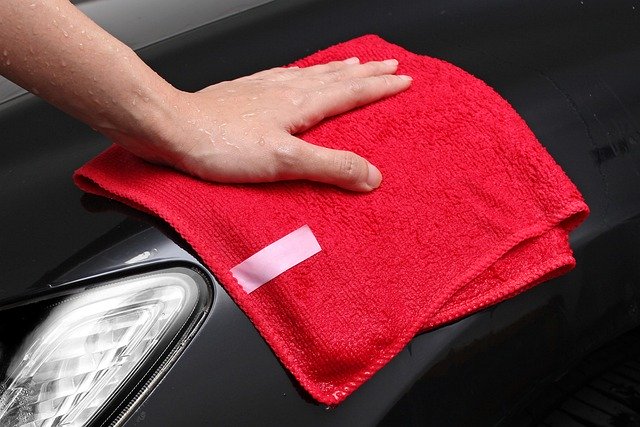Keeping your home clean and hygienic is essential for a healthy living environment. While we often focus on cleaning floors, surfaces, and other visible areas, we may overlook an important part of our homes: blinds and curtains. These window coverings accumulate dust, allergens, and even bacteria over time, affecting indoor air quality and potentially causing respiratory issues.
In this guide on how to clean and disinfect your home’s blinds and curtains, we will walk you through the steps to effectively clean and disinfect your home’s blinds and curtains, ensuring a fresh and healthy atmosphere for you and your loved ones.
Assessing the Material
Before diving into the cleaning process, it’s crucial to understand the material of your blinds or curtains. Different materials require different cleaning methods to prevent damage. Here’s what you need to know:
1.1. Fabric Blinds or Curtains
If your window coverings are made of fabric, check the care label or any manufacturer’s instructions to determine the suitable cleaning method. Some fabrics may require professional cleaning, while others can be cleaned at home.
1.2. Vinyl or Aluminum Blinds
For vinyl or aluminium blinds, you have more flexibility in the cleaning process. These materials are generally durable and can withstand various cleaning techniques. However, be cautious with harsh chemicals that could damage the surface.
1.3. Wood Blinds
Wooden blinds add an elegant touch to any room, but they require special care. Avoid excessive moisture or aggressive cleaning products that may warp or discolour the wood. Always follow the manufacturer’s recommendations for cleaning and maintenance.
Gathering the Necessary Tools and Supplies
To efficiently clean your blinds and curtains, gather the following tools and supplies:
- A vacuum cleaner with a brush attachment
- Soft microfiber cloths or dusters
- Mild detergent or specialized cleaner (compatible with the material)
- Bucket or basin
- Rubber gloves
- Clean, lint-free towels
- Spray bottle
- Disinfectant solution (appropriate for the material)
Having these items ready will ensure a smooth cleaning process and help you achieve the best results.
Cleaning Blinds
Blinds can be a magnet for dust, allergens, and even pet hair. Regular cleaning is essential to maintain a fresh and dust-free environment. Here’s how to clean different types of blinds effectively:
3.1. Fabric Blinds
- Start by using a vacuum cleaner with a brush attachment to remove loose dirt and dust from the blinds.
- Fill a bucket or basin with warm water and mild detergent. Dip a soft microfiber cloth or sponge into the solution and gently wipe the fabric blinds, removing any stains or spots.
- Rinse the cloth or sponge thoroughly and wipe the blinds again to remove any soapy residue.
- For stubborn stains, you may need to use a specialized fabric cleaner. Follow the manufacturer’s instructions and test the cleaner on a small, inconspicuous area first to ensure it doesn’t cause discolouration.
- Finally, allow the blinds to air dry completely before reinstalling them.
3.2. Vinyl or Aluminum Blinds
- Close the blinds completely and use a soft microfiber cloth or duster to remove loose dust and debris. Start from the top and work your way down.
- If the blinds are stained or have sticky residue, create a mild detergent solution by mixing a few drops of detergent with warm water in a spray bottle.
- Spray the solution onto a clean cloth and wipe each slat, ensuring thorough coverage.
- If there are any stubborn stains, you can use a non-abrasive sponge or a soft-bristle brush to gently scrub the affected area.
- Rinse the cloth or brush frequently and continue until all slats are clean.
- Once done, wipe the blinds with a clean, lint-free towel to remove excess moisture.
- Open the blinds and let them air dry completely before closing them again.
3.3. Wood Blinds
- Begin by using a vacuum cleaner with a brush attachment to remove dust and debris from the blinds.
- Fill a spray bottle with a mixture of warm water and a mild wood cleaner. Avoid using excessive moisture, as it can damage the wood.
- Lightly mist the solution onto a soft microfiber cloth and wipe each slat, ensuring you reach all surfaces.
- For stubborn stains, use a specialized wood cleaner following the manufacturer’s instructions.
- Once cleaned, wipe the blinds with a clean, dry cloth to remove any excess moisture.
- Allow the wood blinds to air dry completely before closing them.
Cleaning Curtains
Curtains not only add aesthetic appeal to your home but also act as dust collectors. Regular cleaning helps maintain their appearance and ensures a healthier indoor environment. Here’s how to clean different types of curtains:
4.1. Machine-Washable Curtains
- Check the care label on your curtains to determine if they are machine-washable.
- Remove any hooks or curtain rings before washing.
- Place the curtains in the washing machine, following the care label’s instructions regarding water temperature, detergent type, and cycle.
- Once washed, promptly remove the curtains from the machine to prevent wrinkling.
- Hang them back on the curtain rod while still damp to allow them to dry with fewer wrinkles.
4.2. Hand-Washable Curtains
- If your curtains are not suitable for machine washing, you can hand-wash them.
- Fill a basin or sink with lukewarm water and a mild detergent.
- Gently submerge the curtains and swish them around to ensure thorough cleaning.
- Rinse the curtains with clean water until all the soap is removed.
- Avoid wringing the curtains, as it can cause wrinkles. Instead, gently squeeze out the excess water.
- Hang the curtains back on the rod to air dry, smoothing out any wrinkles by hand.
4.3. Dry-Clean Only Curtains
- Some curtains may have a dry-clean-only label due to their delicate fabric or intricate design. It’s important to follow these instructions to avoid damaging the curtains.
- Take the curtains to a professional dry cleaner who specializes in handling delicate fabrics.
- Inform the dry cleaner of any stains or specific concerns you have regarding the curtains.
- After the dry cleaning process, hang the curtains back in your home once they are ready.
Disinfecting Blinds and Curtains
In addition to regular cleaning, it’s essential to periodically disinfect your blinds and curtains, especially during flu seasons or when dealing with allergies. Disinfection helps eliminate germs, bacteria, and other pathogens. Here’s how to do it effectively:
- Prepare a disinfectant solution suitable for your blinds or curtains. Check the manufacturer’s instructions or consult a professional if needed.
- Fill a spray bottle with the disinfectant solution and lightly mist it over the blinds or curtains. Ensure you cover all surfaces.
- Let the solution sit for the recommended time specified on the disinfectant product.
- Use a clean cloth or towel to wipe off the excess disinfectant solution.
- Allow the blinds or curtains to air dry completely before opening or closing them.
Conclusion
Cleaning and disinfecting your home’s blinds and curtains is an essential part of maintaining a healthy living environment. By following the appropriate cleaning methods for different materials and regularly removing dust, allergens, and bacteria, you can improve indoor air quality and prevent potential health issues. Remember to check care labels, gather the necessary tools and supplies, and take the time to clean each blind and curtain thoroughly. With these simple steps, you can ensure your window coverings stay fresh and clean, and contribute to a comfortable and hygienic home.













